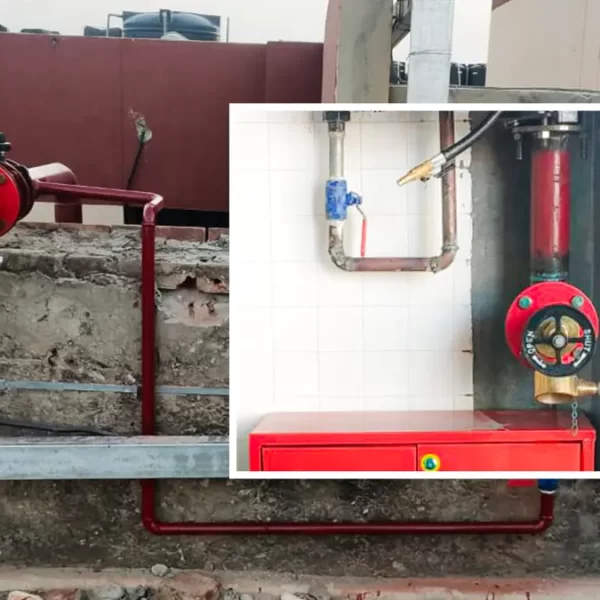Fire Hydrant – Types, Working, Components & Advantages


Fire Hydrant – Types, Working, Components & Advantages
A Fire Hydrant System installation consists of a system of pipework connected directly to the water supply to provide water to every hydrant outlet and intends to provide water the fight a fire. The water is released into the fire engine form which is then pumped and spread over the fire.
Types of Fire Hydrants
Fire Hydrant Protection System is designed to fight the fire, in all types of risks. Hydrant System forms the backbone of the complete firefighting system. It is a safety measure or emergency equipment needed in buildings that include a series of components that provide water to assist fire.
Such systems fight the fire using a well-designed water allocation system that has a water tank and fire pumps. It has a piping system attached all over the building using the pipes, nozzles, and hydrants. The purpose of a fire hydrant system is to provide the best possible water to each corner of the building. It supports protection the simply taking control of fire during an emergency in the building.
How does Fire Hydrant Works?
Damia Global Services Pvt. Ltd. provides you with the best fire protection solution designed with quality, reliable and durable materials. We have a team of engineers with high knowledge in designing, installing, inspecting, and testing hydrant systems for commercial and industrial applications. Our designed fire hydrant systems can away from harm during a fire. Water is provided through the system as a straight stream to quiet the fire.
FIRE HYDRANTS COMPONENTS:
- Fire Fighting Pumps & Accessories
- Piping
- Panels
- Landing Valves
- Hoses
- Couplings
- Hose Reel
- Branch Pipes & Nozzles
- Fire Brigade Connections
- Wiring & Instrumentations
- Maintenance Valves
Fire Fighting Hydrant Systems are the most generally used, in many residential and commercial projects. If you have ever seen a “Red” color pipe, circulating an establishment or factory, you have seen a Fire Hydrant Pipe. In most information clippings about a fire, you can notice a fireman shooting water up to 10 stories high or more, that the fireman is using the Fire Hydrant System.
How Do Fire Hydrant Systems Function?
A well is dug, called “Fire Well”, where water store throughout the year. It connects to the pump room. From the pump room, there are two or three main pipes connected with it. These pipes form a network of pipe that’s cover the factory compound and the factory. The pump has the work, to constantly refilling all the pipes connected with water under pressure. The pressure is about 7bar to 10bar.
When a fire seen, then activates the hydrant system and points it in the direction of the fire. A flow of water attacks the fire and the fire eventually extinguished. The pump continuously pumps the water to maintain the system pressure.
Advantages of Fire Hydrant System
- A fire hydrant system is an effective means of extinguishing a fire in a building that can result in heavy devastation.
- The system can fight the fire from a long distance with its piping system.
- As it covers each point of the building, it has more penetration capability as compared to other fire protection systems.
- Hydrant valves are established at various places throughout the building, leaving no corner on the premises unprotected.
Disadvantages of Fire Hydrant Systems
- The main disadvantage of Fire Hydrant System is that it has to be manually activated. The flow of the Fire Hydrant System is so powerful; two men are required to hold the water hose. A Fire Hydrant System, may cause damage to the tools or machines.

2. A Fire Hydrant Systems are very popular and, Customers search only for Fire Hydrant Companies or Fire Hydrant System Suppliers, but the main thing to understand is that it may not be the most efficient system.
In a fire hydrant system, an immense quantity of water is pumped out from the water tank with such a force and speed so that it can get the fire-affected area. The capacity of these water tanks depends on the size and floor area of building like residential, commercial, or industrial.
The performance of a hydrant system depends on the quality and efficiency of the elements used to design the system.
This system needs inspections and tests at the regular interval of time to determine the system is working in proper way. At Damia Global services, a team of engineers will check and explore the installation in the building.
https://youtu.be/cveuVXqrYq4https://youtu.be/vouWAx-VWhghttps://youtu.be/aMi7iXD0l9I


